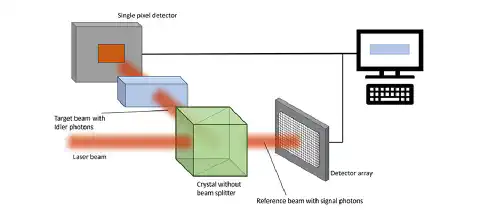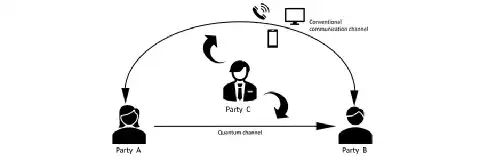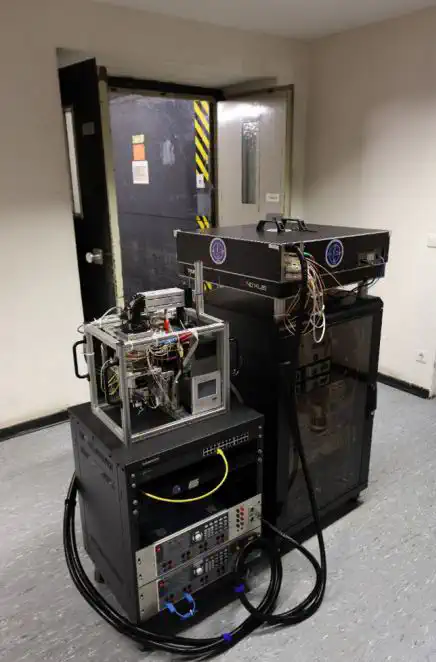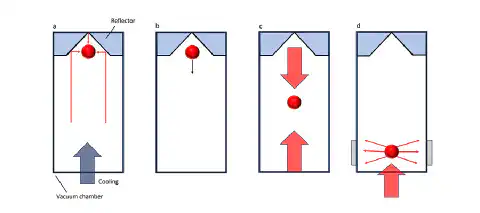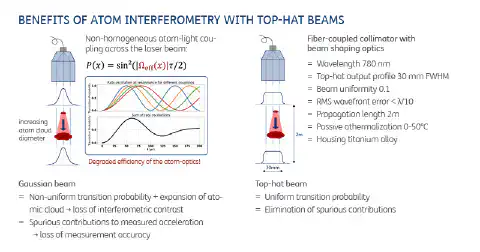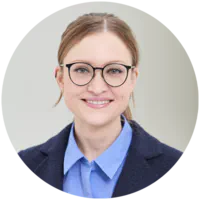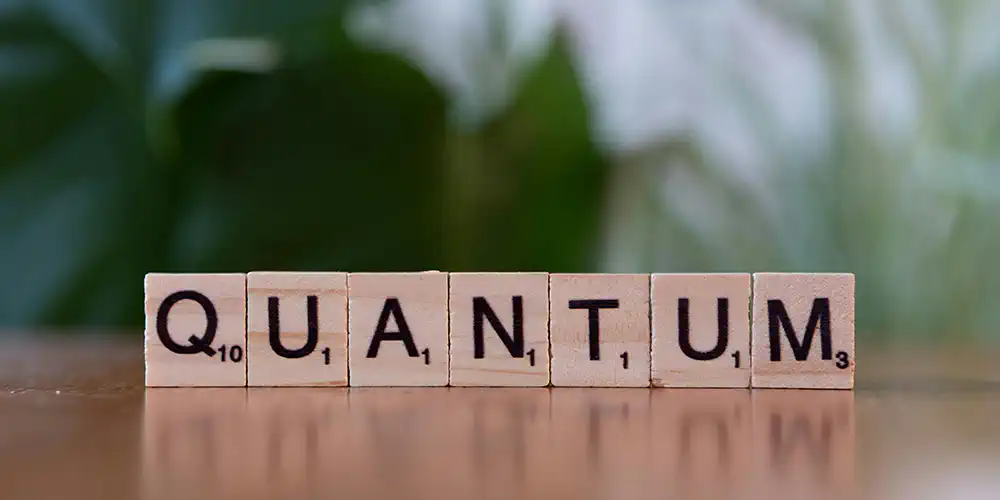
Quantum Technology and Photonics
How Photonics Is Driving the Quantum Revolution
Content
Quantum technology is rapidly evolving from theoretical research to practical engineering solutions with far-reaching industrial impact. The fundamental principles and phenomena of quantum physics have already been extensively explored and attention is now shifting toward practical applications. In this blog post, we take a closer look at how photonic components and technologies are playing a critical role in advancing quantum computing, quantum cryptography, and high-precision measurement systems.
Quantum Technology: From Research to Real-World Applications
One of the most discussed goals of quantum technology is to develop powerful quantum computers capable of solving complex problems that are beyond the reach of today’s conventional computers. But quantum innovation isn’t limited to computing power alone. Quantum cryptography is also a major area of research, promising ultra-secure communication methods that will remain safe even against the capabilities of future quantum computers.
Quantum technologies are also poised to revolutionize precision measurement, enabling levels of accuracy previously thought impossible – for example, in timekeeping and instrument calibration. Another highly promising area is the development of quantum sensors, which could transform fields like medical diagnostics and environmental monitoring through unprecedented measurement precision.
Photonics: A Key Enabler of Quantum Technologies
Photonics plays a pivotal role in turning these quantum breakthroughs into reality. From generating and manipulating light to precisely controlling it at the quantum level, photonic technologies are critical for improving the efficiency, security, and precision of quantum systems. The miniaturization of optical components is also helping integrate these technologies into practical devices.
Core components in quantum photonics for light modulation include beam splitters and shapers, mirrors, photon sources and detectors, as well as optical fibers.
Applications of Quantum Technologies
Advancements in computing power, measurement precision, and device integration – made possible through photonics – are unlocking new use cases and opportunities for quantum technologies. Three areas where control over quantum states has already made a tangible impact are outlined below.
1. Quantum Sensing in Measuring Systems and Medicine
Quantum sensing is transforming measuring systems by leveraging quantum phenomena such as superposition and entanglement to measure physical quantities with unprecedented sensitivity and precision. Modern quantum techniques enable higher optical resolutions and the exploration of new spectral ranges, and set new standards for sensitivity and reproducibility. In medicine in particular, quantum sensors offer the potential for more accurate imaging techniques.
Fig. 1: Simplified principle of ghost imaging. The idler photon interacts with the object, while the signal photon – entangled with it – forms an image without directly touching the object.
One example of quantum technology in action is ghost imaging, a technique that produces sharp images even in environments with disruptive scattering effects (see Fig. 1). In this process, a laser beam is split into two entangled light pulses. One pulse interacts with the object, while the other remains unaffected. Thanks to quantum entanglement, precise image data can be extracted from both light signals – even at wavelengths that typically struggle to penetrate materials, such as infrared light. This method relies on entangled photon pairs generated by specialized optical crystals.
Quantum sensors, such as atomic clocks and atom interferometers, are already in use today, for example, in GPS systems and geophysical exploration. Their key advantages lie in their miniaturization and extreme sensitivity, allowing for highly precise measurements even in remote or hard-to-access locations and under weak signal conditions. These technologies are opening new frontiers in chemical analysis, environmental monitoring, and healthcare diagnostics.
2. Quantum Communication: Secure Data Transmission Powered by Photonics
Quantum technologies are also beginning to reshape the field of communications. Quantum communication enables tamper-proof data exchange by leveraging quantum properties such as entanglement and interference. One of the most important methods is Quantum Key Distribution (QKD), in which encryption keys are transmitted using photons, ensuring that only the intended recipients have full access to the information about the key.
Fig. 2: Simplified illustration of a QKD communication path. Party A encodes information into photons and sends them through a quantum channel to Party B, who measures and aligns the polarizations. Eavesdropping by Party C is impossible because they don’t know the polarization bases, cannot copy quantum states, and any attempt to measure the photons disturbs the system, making interception detectable.
QKD operates over two channels: a quantum channel and a classical channel (see Fig. 2). Photons with defined polarization states – representing binary values of 0 or 1 – are transmitted and measured. Any attempt by a third party to intercept the transmission leaves detectable traces, as quantum states cannot be cloned or measured without introducing anomalies.
Quantum encryption holds significant promise for securing financial transactions, government communications, and critical infrastructure. Research is also underway to apply quantum technologies in protecting 5G networks and fiber-optic communications, paving the way for greater data security for the public in everyday life.
3. Quantum Computing: Photonics Powering the Next Generation of Processors
Quantum computing is pushing the boundaries of processing power, laying the groundwork for quantum computers that could one day replace classical supercomputers. Photonic technologies, including optical circuits and integrated photonic structures, are central to developing quantum processors and secure communication networks that exploit the quantum property of superposition. These circuits are designed to manipulate individual photons with precision, enabling scalable quantum logic gates and qubit operations. Unlike classical bits, which represent either a 0 or a 1, a quantum bit (qubit) can exist in multiple states simultaneously. This allows quantum computers to efficiently process and transmit huge amounts of information (see Fig. 3).
Fig. 3: Difference between a classical bit and a qubit. Traditional bits have a fixed state of either 0 or 1. Qubits can have multiple states at once, enabling them to carry more information. Qubits are typically transmitted via optical fibers, which support the low-loss transmission of individual photons.
However, data loss remains a significant challenge. Photons can easily be lost in optical fibers or waveguides, and unlike classical networks that can amplify signals with repeaters, the loss of a photon results in the complete loss of the associated information. Quantum repeaters are currently being researched to overcome this limitation. These devices could dramatically reduce transmission losses and improve the reliability of future quantum communication networks – another exciting frontier in quantum technology research.
Quantum Technology in Navigation and Gravimetry: Innovative Research Projects
Numerous research initiatives in quantum science are already finding practical applications in photonics. Among them, quantum technologies are opening entirely new possibilities in the fields of navigation and gravimetry. Two pioneering research projects demonstrate how quantum-based sensors can complement and enhance traditional navigation and measurement systems.
Navigation Powered by Quantum Technology
From GPS to inertial navigation systems (INS), modern navigation solutions are essential to daily life. However, these systems face limitations under complex conditions – such as in submarines or in locations with high interference. Quantum inertial sensors, which operate based on the principles of quantum mechanics, offer a promising alternative.
Next-Generation Quantum Inertial Sensors
A cutting-edge German research project is currently developing the next generation of inertial sensors. The initiative focuses on two key areas: advancing fundamental quantum measurement technologies and translating these breakthroughs into market-ready solutions. Several important milestones have already been achieved:
- Single-Axis Quantum Sensor: An inertial sensor based on an atom interferometer has been successfully validated on a test stand. The experimental setup (see Fig. 4) includes a vacuum chamber, a laser system, and various electronic and optical components – including asphericon beam shaping optics.
Fig. 4: Atom interferometer setup with sensor head and racks for electronics and lasers. ©Leibniz Universität Hannover, Institut für Erdmessung
- Hybrid Systems: By combining quantum and classical sensors, researchers have significantly improved the precision of acceleration measurements.
- Six-Axis Navigation: Building on these advances, the team has developed a concept for a fully integrated sensor capable of measuring motion in all spatial directions – marking a major step toward commercial deployment.
The resulting test stand showcases the industrialization potential of quantum technologies and illustrates how they can enhance existing navigation systems. By utilizing commercial components and advanced algorithms, the project is laying the groundwork for scalable, real-world applications.
The QGyro project demonstrates how quantum technology transitions from basic science to engineering prototypes ready for industrial application. For more details on this project and the laser technologies involved, visit the QGyro research initiative.
Quantum Gravimetry: Measuring Gravity with Unprecedented Precision
Gravimetry involves measuring variations in the Earth’s gravitational field to gather insights into its internal structure and composition. This technique plays a critical role in assessing environmental risks, exploring underground resources, and monitoring vital resources such as water and oil.
The gravitational acceleration constant “g” varies depending on geographic location and geological conditions, typically ranging between 9.76 m/s² and 9.83 m/s².
Development of quantum gravity sensors
Quantum technologies are poised to revolutionize gravimetry by providing long-term stability and significantly higher measurement accuracy. While the first quantum gravimeters (QGs) already exist, challenges such as limited portability, lack of robustness, complex operation, and high operating costs have so far restricted their widespread adoption. A European research initiative is working to overcome these hurdles, open new market opportunities, and support key goals of the European Green Deal – for example, through applications in geothermal energy, CO2 storage, and sustainable mining.
The project focuses on developing a new quantum acceleration sensor and advancing the next generation of the Absolute Quantum Gravimeter (AQG) and Differential Quantum Gravimeter (DQG). These systems aim to deliver greater compactness and robustness while reducing energy consumption. The DQG in particular is designed to measure both the gravitational acceleration g and its vertical gradient simultaneously, which offers significant advantages across a wide range of applications.
How Quantum Gravimeters Work
The latest generation of quantum gravimeters is based on atom interferometry. In this method, a laser beam manipulates atoms within a vacuum chamber to measure gravitational acceleration. The atomic cloud is precisely controlled using sequences of laser pulses, enabling highly accurate measurements.
Fig. 5: Simplified operating principle: a) Atoms are cooled and held in a magneto-optical trap; b) The atomic cloud is dropped; c) A sequence of laser pulses is applied; d) Gravitational acceleration is measured.
Project Challenges
Despite the progress made with quantum gravimeters, several technical challenges remain. One is the need to actively cool the laser source and the sensor head, which increases both system weight and energy consumption. Additionally, the use of conventional Gaussian laser beams introduces measurement errors as the atomic cloud spreads, causing the intensity to fluctuate.
To address these issues, researchers have developed new cooling techniques that reduce power consumption, along with an optical accelerometer that enhances sensitivity and shortens measurement times. They have also added a top-hat beam shaper from asphericon, which improves measurement accuracy by producing a more uniform laser beam and reducing sensitivity to misalignment (see Fig. 6). Moreover, software tools are being developed to simplify the interpretation of measurement results.
Fig. 6: Comparison of the use of Gaussian beams and top-hat beams in atom interferometry in the FIQUgS project.
Potential of Quantum Gravimetry
Quantum gravimeters have broad application potential far beyond traditional geophysics. In quantum computing, they can serve as ultra-precise measurement tools. In civil engineering, they offer new ways to monitor the structural integrity of buildings and infrastructure. Space applications also stand to benefit, particularly in satellite navigation and positioning. Another highly promising area is mining, where quantum gravimeters could help optimize resource exploration while minimizing environmental and operational risks.
For more information about this project, visit FIQUgS.
Photonics and Quantum Technologies: A Final Perspective
The quantum revolution is no longer a distant vision – it’s already taking shape, with photonics providing essential building blocks for real-world applications. From generating and controlling light sources to enabling the miniaturization and efficiency of quantum components, photonics is at the heart of this technological transformation. Current research efforts in areas like quantum sensing and quantum gravimetry highlight the enormous potential of these technologies. However, intensive research and the development of robust, scalable systems and supply chains are still needed to bring quantum solutions into widespread commercial use. Advancements in photonics are already paving the way – suggesting that quantum technologies will soon play a pivotal role across a wide range of industrial and scientific applications.
Sources
- Neugebauer, R.: Quantentechnologien (Fraunhofer ZV), München 2022
- Kagermann, H./Süssenguth, F./Körner, J./Liepold, A.: Innovationspotenziale der Quantentechnologien der zweiten Generation (acatech IMPULS), München 2020
- Konzeptpapier der Nationalen Initiative zur Förderung der Quantentechnologie von Grundlagen bis Anwendungen (QUTEGA): QUANTENTECHNOLOGIE Grundlagen und Anwendungen, 2017
- Photonics@Quantum: Technologies for Quantum Systems (Marktreport SPECTARIS und Messe München), Berlin/München 2022
- Dowling J P./Milburn G. J.: Quantum technology: the second quantum revolution; the royal society, In: Philosophical Transactions: Mathematical, Physical and Engineering Sciences Vol. 361, No. 1809, Information, Knowledge and Technology (Aug. 15, 2003), pp. 1655-1674
